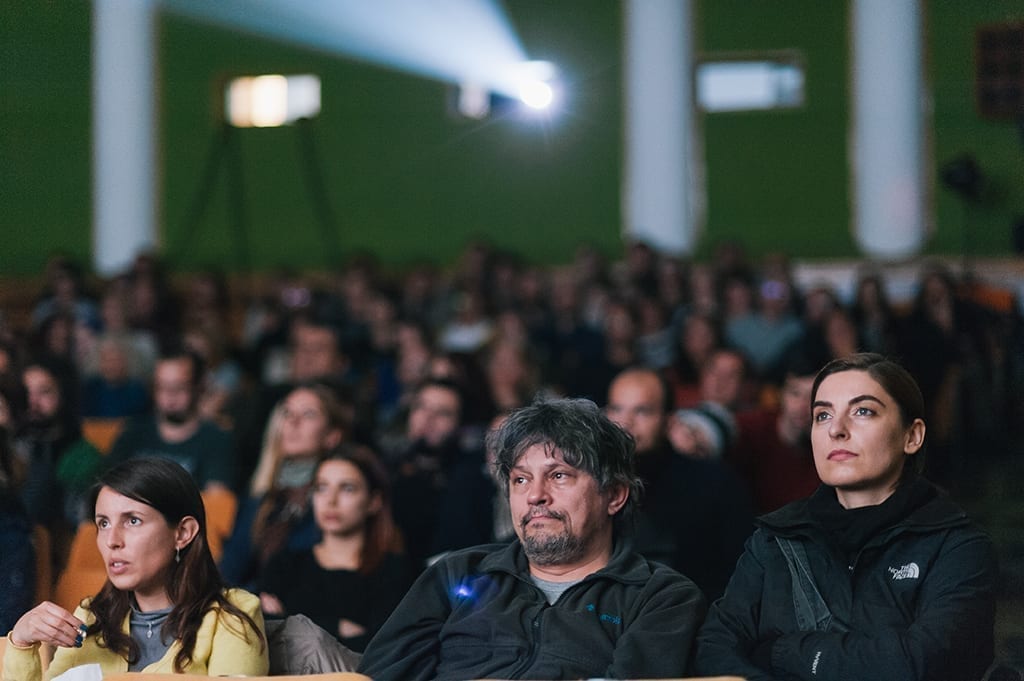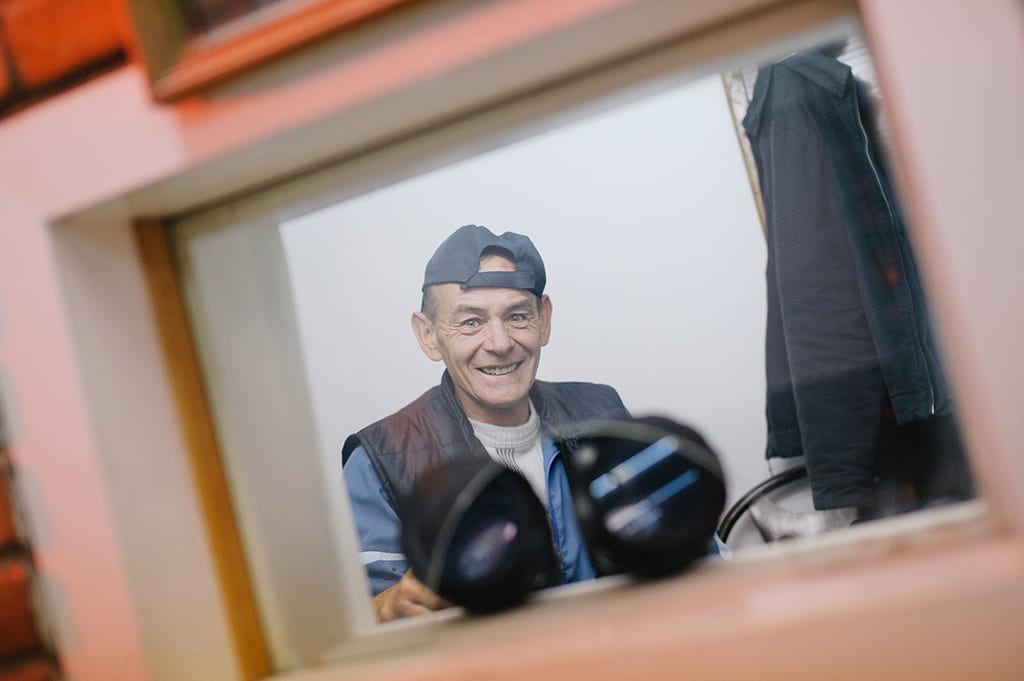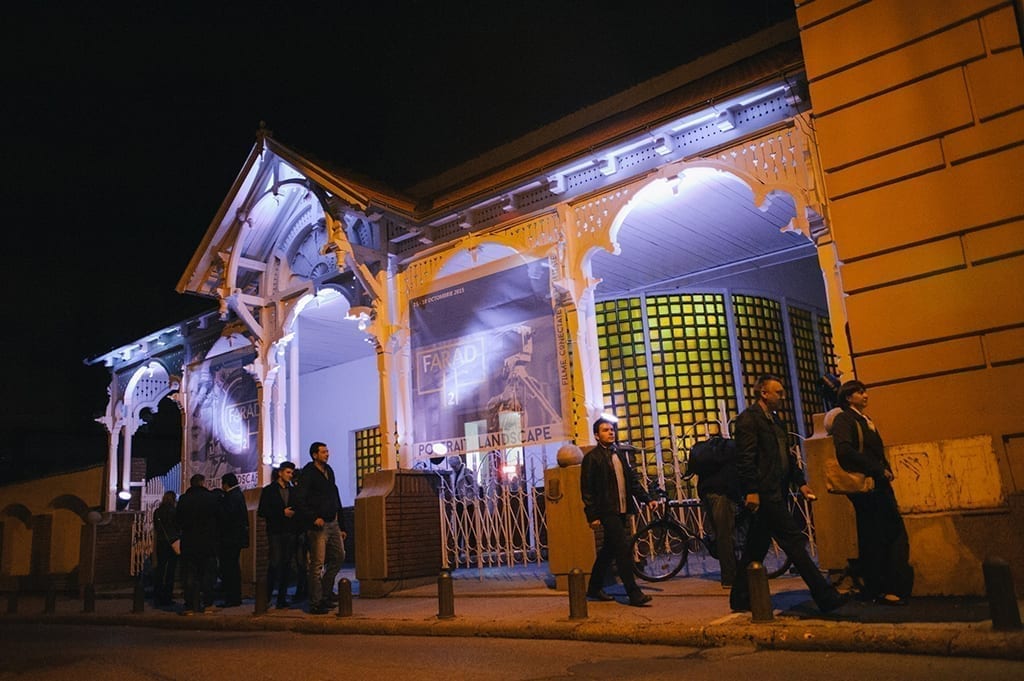[read in RO]
feeder insider w/ Mona Nicoară [fARAD] [EN]
Mona Nicoara is the artistic director of fARAD, a documentary film festival that electrified Arad in recent years. Having made multiple award-winning documentary films, including “Our School” (selected at over 60 festivals around the world and screened in the USA, Switzerland, and Romania), Mona Nicoara has been working and living in New York since 1995, from where she has also responded to this interview.
reality / cinema / celebrity
I’m nervous when… I watch the news.
The last book that’s over my head… is the catalogue of the ProletKultur art exhibition at the National Art Museum. It’s revealing and alarming, compelling and irritating.
The movies could be… longer. I do not know why everyone edits in such a hurry.
The dusk… was ruined for me since I read that brilliant, multicoloured sunsets, with lots of orange and purple, are the result of global warming.
I’m annoyed by… lying, distances, the passage of time, Trump, corruption, the Coalition for the Family, heat waves. I have more if you want, the list is long.
I dance… no.
I often wonder… yes.
A secret place in Arad… Calin Man’s office in the museum building, which is also the kinema ikon headquarters. He has all sorts of things there: the history of film in recording devices, and a small and very lonely shark.
Music is for me… something that must be turned up.
I always forget to… give thanks as much as I should.
feeder.ro: “Movies connected to reality” is a promise that fARAD (Arad’s documentary film festival) has been making to the audience for four editions. How does a film, a medium “arranged” to produce emotions and storylines, connect to what we call “reality” – a concept in itself difficult to define?
Mona Nicoară: I think the question is more complicated than the answer. After all, any film is connected to reality – even Avatar, which is actually the blue-tone, digitally processed to exhaustion, Sci-Fi projection of Western colonialism, right? Fiction has an intermediate layer, which, as you say, arranges, changes things more explicitly, more obviously, as it were. The documentary works in a more direct way, without a script or an obvious mise-en-scene, but falling in the same quest for an emotional and aesthetic experience as fiction films. Like any film, a documentary has to tell us something about life and something about the cinema, to paraphrase Truffaut. From this point of view, the difference between The Death of Mr Lazarescu, Cristi Puiu’s fictionalized human interest new story and Hospital, the cinéma vérité story of a New York-based hospital shot by Frederick Wiseman, is almost nonexistent.
Now, there is a prejudice in Romania that holds documentary as a kind of Cinderella of the film world – a bias fueled by distribution systems in the communist era, when documentaries could be seen in cinemas almost exclusively as shorts programmed before fiction features, as well as after 1989, when documentaries almost disappeared from commercial cinemas and were assimilated by the broad public almost exclusively to commercial and/or educational television products. What we are trying to do at fARAD is to focus on the cinematic form of reality-based films, on the art of non-fiction.
Images © fARAD 2016
f: Why documentary film and why all the way in Arad?
Mona Nicoară: In 2014, the proposal to organize a documentary film festival in Arad came to Film ETC. / Romanian Film Initiative (Corina Şuteu, Oana Radu, and Mihai Chirilov) from the Municipal Cultural Center and the Arad City Hall. When we explored the idea, we took into account the fact that in Arad, more than anywhere in the country, there is a tradition of the experimental documentary. It began in the late 1960s with the kinema ikon group, which used half of the film stock received for officially-sanctioned ethnographic films to make short films that simultaneously undermine cinematographic conventions and provide an opportunity to meditate on the nature of the film. Newer generations of young filmmakers were born around kinema ikon – our colleagues at the CitiZenit group are among them – so we found in Arad a strong base layer, a tough nucleus of filmmakers who are actually the heart of the festival.
f: Before fARAD, as far as I know, Arad did not have a film festival. How does the local and the neighbouring public respond to such a project?
Mona Nicoară: Very, very well. We already have a loyal audience. For me, the most interesting thing is to see that every year there are some viewers who come to each projection. It’s very moving. Then it’s fascinating to see how diverse the audience is at fARAD – in terms of age, interests, relationship with film. This year we are expanding a bit beyond the Arta Cinema, where we were for the first editions, to the newly-opened Cinema Grădiște, where we will have two screenings, and to the Ioan Slavici Theatre, where Corina Şuteu discuss the future of the film industry in Romania.
fARAD 2015 photo Ciprian Hord-Avangarda Crepusculara
f: How does “celebrity,” the 2017 theme for fARAD work through this year’s selection?
Mona Nicoară: We were interested in how documentaries, which are the vehicle for anatomizing the human soul, complicate things when it comes to celebrity. On the one hand, films can make stars out of ordinary people, they build “characters,” they isolate and sculpt stories from the many things, most of them uninteresting, that happen in a person’s life. On the other hand,
when approaching celebrities, figures already built up in the imagination of the public, the documentary film gets to deconstruct, to expose the innards of celebrity under a magnifying glass, and thus question the glossy surface of the celebrity. Genuine attention, empathy, and humanization destabilize and complicate even the simplest success formulas.
f: If you were to choose 3 movies that we should not miss fARAD 4, which would those be?
Mona Nicoară: The national premiere of I Am Not Your Negro, nominated for an Oscar this year, plays more forcefully in the Trump era, and is a meditation on the relationship between the American, Hollywood-dominated and therefore eminently white culture – and the construction of the black identity during the civil rights era and at present. Another national premiere is the thriller The Lovers and the Despot, about a couple of South Korean filmmakers kidnapped by North Korean cinephile in chief Kim Jong-Il. And finally, for nostalgics, Lasse Hallström’s semi-documentary ABBA, which for many of us before the Revolution was the first and only documentary seen in the cinema – on a big screen, in the dark, next to other strangers, as movies are made to be seen.
f: Special guests from all over the world are invited to each edition. Who do we get to know this year?
Mona Nicoară: This year we have at the festival and at the lab Erin Casper, who re-edited the Oscar-winner Laura Poitras’s opening film, Risk, by after its premiere at Cannes. Erin turned a simpler portrayal of a problematic character, WikiLeaks founder Julian Assange, into an exploration of the relationship between the documentarian and her subject. Then, the Arad audience will meet Pascale Lamche, a director who dared to address one of the most controversial women in contemporary history: Winnie Mandela.
And we have two repeat offenders: Magnus Gertten, who last year came with Every Face Has a Name and now comes as a soccer fan addicted to Malmö’s local football club, who gave the world a star: Zlatan Ibrahimovic; and Dana Bunescu, the premiere editor of the new wave of Romanian cinema, freshly awarded in Berlin with a Silver Bear for outstanding artistic contribution, who returns to the lab as a mentor and in the festival with the fascinating Autobiography of Nicolae Ceausescu.

fARAD 2016 / Mona Nicoară, Oana Radu
f: In addition to multiple award-winning films, fARAD offers a laboratory for young filmmakers. What is it and what has come out of this laboratory so far?
Mona Nicoară: The lab is a privileged space we create for a few days for promising projects that are at the most vulnerable stage: development. For filmmakers who are at the beginning of the road, it is very difficult at this stage to separate the creative feedback from the one related to production, financing, and the market potential of a project.There are already many opportunities to receive market-related feedback – most pitching forums focus on that. But at the creative level, at this delicate moment in the life of the project, young filmmakers often find themselves alone with their worries and insecurities. The lab is trying to ease this burden: for a few days, we are talking only about the artistic value of each project and we offer expertise in form and intent, leaving aside material or market worries.
In fact, what matters for each of us is to make the best possible film, and for this, we need first of all creative support, technical skills, confidence in our instincts, clear artistic intentions, and time.
And since I mentioned time: we are only in the second year of the lab. It’s still early: many documentaries take four or more years between the development and completion. It is unhoped-for that we already have a film from last year’s lab in an advanced stage of post-production — Andra Tarara’s personal short.
f: For someone who does not know anything about the new wave of quality documentaries, where should they start? What would you recommend off the “top of your head”?
Mona Nicoară: If I start listing, I won’t stop. And readers will not remember too many titles anyway.
So I’m going to reduce my recommendation to one: start in the cinema. Not in front of the computer or in front of the TV, no matter how ridiculously big the device is – but in the theatre, in front of a large screen, in the dark, next to strangers who go through the same emotions as you for an hour and a half or two. It’s something totally different.
Unfortunately, documentaries not very accessible in this way in regular cinema programming. But we have more and more festivals, many exceptionally curated, where documentaries can be experienced in the cinema: fARAD this week, Astra the next, One World in March and TIFF in June…

fARAD 2016, day 4
f: How is FARAD organized? Who is the team behind this “up & coming” event?
Mona Nicoară: It is an already tested and cohesive team: on the one hand, the Film Association ETC. / Romanian Film Initiative (Corina Şuteu, Oana Radu, and Mihai Chirilov) are organizers experienced with such festivals and events, including the Romanian film festival in New York. I have known them for almost 10 years now and we have worked together in several different contexts. Then 111 Film & Entertainment were with us at the fARAD from the very beginning, ensuring the production bit, in cooperation with the Municipal Center for Culture and the Arad City Hall, who not only patronizes the festival but also rolled up their sleeves to work with us at every step. And for the laboratory, the National Center for Cinematography has supported us through the Cultural Association for Art Education. Last but not least, in Arad, we are lucky to find some outstanding local professionals: Călin Man from kinema ikon, who built our visual identity from the first edition, and the Avangarda Crepusculară (Călin Bibe, Ciprian Hord), who do the video and photo documentation of the event.
f: Arad is not a very close city for many Romanians. Convince us to visit it for fARAD!
Mona Nicoară: For fARAD I hope we have already provided enough arguments. For Arad, however, I do not really know how to argue logically: it’s a city I have been tied to since childhood, and I always experience it with childish wonderment. There is something very beautiful, old, and peaceful in the Austro-Hungarian architecture of the place – and in the same time something extremely promising, dynamic in the alternative culture of the place.

Mona Nicoară / fARAD 2016
f: What projects can we expect from Mona Nicoară?
Mona Nicoară: Together with producer Ada Solomon and editor Dana Bunescu we are in post-production with a documentary about poet Nina Cassian, which we hope to premiere in 2018. Then, I have a few projects that I think about, but I work slowly (every film I worked on so far swallowed six years at a time), I am prudent and a little superstitious…
feeder.ro: It was a pleasure!
Photos © fARAD.

































Pingback: Proiectul editorial feeder insider art & sound 2017 – Save or Cancel
Pingback: POLL: What are the most exciting festivals in Romania, 2018? | | Feeder.ro
Pingback: Descoperă noul magazin online feeder.ro | | Feeder.ro
Pingback: feeder insider w/ Corina Șuteu [en] | | Feeder.ro
Pingback: Proiectul editorial feeder insider art & sound | | Feeder.ro